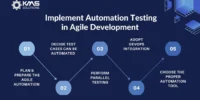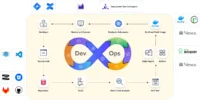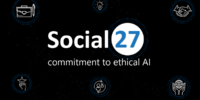Welcome to the era of AI in Action 2.0, where we explore cutting-edge strategies for implementing artificial intelligence in the real world. As organizations increasingly embrace AI, it’s crucial to navigate the complexities and unlock the full potential of this transformative technology. Let’s dive into quick tips to craft successful AI implementations that drive real-world impact.
1. Strategic Goal Alignment: AI as a Business Enabler
Begin your AI journey with a clear understanding of your strategic goals. Align AI initiatives with business objectives to ensure a cohesive and impactful implementation. Identify specific pain points or opportunities where AI can bring tangible value, laying the foundation for successful integration into existing workflows.
2. Data Quality Imperative: Fueling AI with High-Quality Data
Data is the lifeblood of AI, and its quality is non-negotiable. Invest in robust data governance practices to ensure clean, relevant, and representative datasets. Quality data fuels accurate model training and results in AI systems that deliver meaningful insights and predictions in real-world scenarios.
3. Agile Development Approach: Iterative Progress for AI Solutions
Adopt an agile development approach for AI projects. Break down complex tasks into manageable iterations, allowing for continuous improvement and quick adaptation to evolving requirements. This iterative process not only accelerates development but also ensures that AI solutions remain aligned with changing business needs.
4. Ethical AI Framework: Prioritizing Responsible AI Practices
Embed ethical considerations into the core of your AI strategy. Establish an ethical AI framework that prioritizes transparency, fairness, and accountability. Ensure that your AI applications adhere to ethical guidelines, respecting user privacy, avoiding bias, and providing explanations for AI-driven decisions.
5. Cross-functional Collaboration: Orchestrating AI Integration
Foster cross-functional collaboration between AI experts, domain specialists, and business stakeholders. Effective AI implementation requires a multidisciplinary approach. By encouraging collaboration, you harness diverse expertise, ensuring that AI solutions are not only technically robust but also aligned with real-world operational needs.
6. Scalability and Performance: Preparing for Growth ⚙️
Design AI solutions with scalability and performance in mind. Anticipate future growth and ensure that your AI infrastructure can seamlessly handle increased workloads. Scalable architectures and efficient performance tuning are crucial for maintaining optimal AI functionality as demand and complexity grow.
7. Continuous Monitoring and Adaptation: Sustaining AI Excellence
Implement continuous monitoring mechanisms to track the performance of AI models in real-world environments. Leverage feedback loops to identify and address issues promptly. By adopting a proactive stance, you ensure that your AI systems remain effective, accurate, and aligned with evolving business dynamics.
Conclusion: AI in Action 2.0 – Transforming Visions into Real-world Impact
AI in Action 2.0 marks a pivotal moment in realizing the transformative potential of artificial intelligence. Align strategic goals, prioritize data quality, embrace agile development, establish ethical frameworks, foster collaboration, design for scalability, and implement continuous monitoring. By following these quick tips, organizations can harness the power of AI to drive meaningful impact in the real world.








